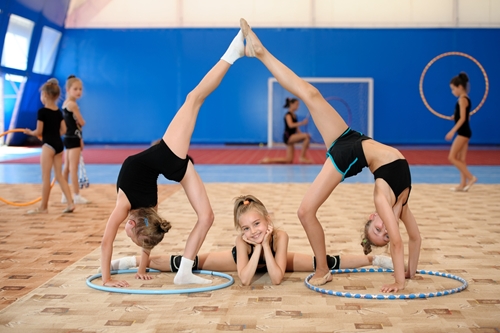If you offer acro-dance or tumbling at your studio, you know the importance of spotting your dancers (and we’re not talking turning technique…at least not in this article). Sometimes even a simple trick can go awry, and it’s essential that you’re there to prevent students from hurting themselves while the learn acro skills or other potentially dangerous moves.
Even if you’re experienced with teaching tumbling, there are likely ways that you can become a better spotter. Here are five tips to improve your technique and keep your dancers safe.
1. Adjust Your Position Accordingly
You likely have one position that’s your go-to for spotting. The most common stances are kneeling on one knee or standing alongside the student. However, you shouldn’t be using the same position for every single dancer. Cheerleading Central explained that you’ll have to adjust your position based on the dancer’s size and experience level.
2. Spot with Your Whole Body
Another way you can improve your spotting abilities is to use your whole body during the process. Not only will this benefit your dancers, but it will save your arms and back in the long run. If you’re only using your upper torso to hoist students, you’re increasing the chance of being knocked off-balance and putting significant stress on your own body. Instead, use a proper squat stance and always brace your spine.
3. Always Wear Shoes
If you’re teaching a hybrid class, you may ditch your shoes from time-to-time when you need to demonstrate a tricky combination or step. However, don’t start spotting any tumblers until your shoes are back on and securely tied. You need optimal traction to safely spot your students, so it’s best to wear shoes to anchor your stance.
4. Alternate Sides Regularly
This tip is more for you than for your dancers. Hybrid Perspective explained that when you’re able to spot with both arms, you can prevent overuse on the dominant side of your body. Start working on ambidextrousness with simple tricks, like walkovers and backbends.
5. Condition When You Can
If you’re going to be hoisting and catching 100-pound athletes, it goes without saying that you need to keep yourself in pretty good shape. While you probably have a long list of tasks to complete each day, it’s a good idea to fit in a little time for conditioning. When you keep your body in shape, it will make spotting easier, reduce the chance of you getting hurt and allow your students to get the best education possible.


